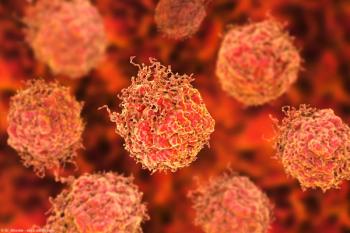
New names for pelvic pain could advance treatments
Past terminology has held management back, Dr. Baranowski argued. The 'itis' of prostatitis, for example, has encouraged patients to seek anti-inflammatory or long-term antibiotic therapies that often don't help.
Baltimore-What's in a name? Would chronic prostatitis or interstitial cystitis by any other names be as treatable?
Andrew Baranowski, MD, thinks so. In fact, he believes that applying better terminology will make these conditions even more treatable because they can turn patients and physicians away from therapies that don't work and toward helpful therapies and the specialists who need to be involved in their management.
Care of both men and women with these and other pelvic pain conditions requires a multidisciplinary approach, which new terminology implies, he told attendees at the NIDDK-sponsored Chronic Pelvic Pain/Chronic Prostatitis Scientific Workshop. Dr. Baranowski is a pain management specialist who heads the Urogenital Pain Clinic at University College London Hospitals, UK. He has been involved with a number of organizations that have tried to improve concepts of just what chronic prostatitis, IC, and other pelvic pain conditions are.
Past terminology has held management back, he argued. The "itis" of prostatitis, for example, has encouraged patients to seek anti-inflammatory or long-term antibiotic therapies that often don't help. The 1987 NIDDK definition of IC, intended only for research, became widely used in practice, but excluded groups of patients who clearly had IC. One of the exclusions he pointed to as questionable was age under 18 years.
"That's a bit crazy," Dr. Baranowski said. "I'm sure no one in this room would say we can't have IC in people less than 18."
But with even broader implications, experts have concluded that many, if not most, patients with the condition don't show glomerulations or Hunner's ulcers on cystoscopy with hydrodistension under anesthesia.
Old conditions, new names
The International Continence Society's term "painful bladder syndrome" (PBS) was a more inclusive term that pointed to pain as well as the bladder as important treatment targets. The new definition now proposed by Dr. Baranowski and the European Association of Urology Committee for Guidelines on Chronic Pelvic Pain is a dual one. It applies the term "pelvic pain syndrome" (PPS) to "the occurrence of persistent or recurrent episodic pelvic pain associated with symptoms suggestive of lower urinary tract, sexual, bowel or gynecological dysfunction."
"There is no proven infection or obvious pathology," he explained.
That reserves the term "chronic pelvic pain" (CPP) for conditions where pathologies are well defined, such as endometriosis-associated pain or localized vulvar pain.
A system like this does have problems, he admitted. First, pain often doesn't stem from the site where it's perceived. For example, pelvic floor muscle dysfunction can be perceived as pain in the bladder. Also, secondary symptoms suggesting an organ may be misleading. The system seemingly involved might suggest a specific diagnosis when none exists, and in fact, multiple organ systems can be involved.
Workshop participants also saw potential problems. David Wise, PhD, pointed out that the term "chronic" can condemn patients to a prognosis. Dr. Wise is the Stanford (CA) University psychologist who developed a combined physical therapy and psychological therapy approach to chronic prostatitis. Leroy Nyberg, MD, PhD, director of urology programs at the NIDDK in Bethesda, MD, said that patients don't like losing the identity of the old labels, which have also become integral to patient associations and support groups. In addition, urologists may fear that renaming the syndromes may take patients from their practices.
But more important than the specific term was Dr. Baranowski's0 conviction that management has to be a team effort. The urologists don't have all the answers, nor do the pelvic muscle specialists, the pudendal neuralgia experts, the psychologists, and the neurologists, he emphasized.
So to urologists who have asked, "How can I as a urologist manage these patients?" Dr. Baranowski replies, "It's simple: teamwork."
Newsletter
Stay current with the latest urology news and practice-changing insights — sign up now for the essential updates every urologist needs.


















